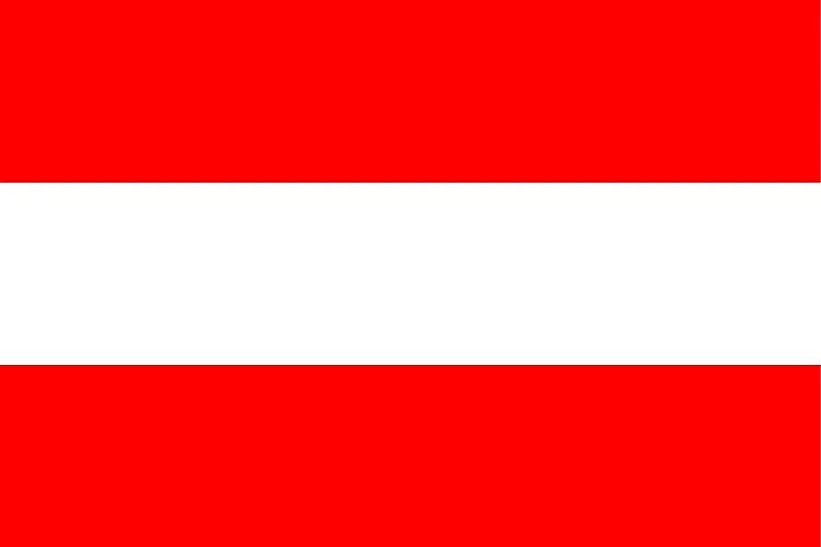
オーストリア
| 大陸 | ヨーロッパ |
| 資本金 | ウィーン |
| 人口 | 8,711,770 |
| GDP | $417.00 億円 |
| 一人当たりGDP | $47,900 |
| ダイヤルコード | +43 |
| ISOコード(2文字) | AT |
| ISOコード(3文字) | AUT |
オーストリア 風景






オーストリアについて
帝国の歴史と現代の革新が出会い、アルプスの美しさと都会の洗練が融合する国、オーストリアへようこそ。中央ヨーロッパの中心に位置し、83,871平方キロメートルのこの内陸国には約900万人が暮らしています。オーストリアは、素晴らしい山岳景観、豊かな文化遺産、高い生活水準が融合した、ヨーロッパで最も魅力的な旅行先のひとつです。
地理的特徴と自然の美しさ
オーストリアの地理は、国土の約62%を占めるアルプス山脈に支配されている。最高峰のグロスグロックナーは標高3,798mに達し、ドラマチックな氷河とアルプスの牧草地に囲まれている。国土はウィーン周辺の東部低地から西部の高山地帯まで変化に富み、多様な生態系と気候帯を形成している。
ヨーロッパで2番目に長いドナウ川は、オーストリアを350キロにわたって流れ、肥沃な渓谷を作り出し、重要な交通路となっている。特にザルツカンマーグート地方の湖は、その澄み切った水と風光明媚な山々の背景で有名である。
オーストリアの美しい自然は、数多くの国立公園や保護区によって守られており、年間を通じてレクリエーションの機会を提供している。冬はスキーリゾート、夏はハイキングコースが有名で、アウトドア愛好家にとってはパラダイスだ。
文化遺産と伝統
オーストリアの文化は、ゲルマン、ハンガリー、イタリア、スラブの影響が洗練された形で融合し、何世紀にもわたる帝国の歴史によって形作られています。首都ウィーンは、ハプスブルク帝国の黄金時代を反映した壮麗な宮殿、博物館、コンサートホールなど、この国の文化の豊かさを物語る存在です。
モーツァルト、ベートーヴェン、シュトラウスといった伝説的な作曲家を輩出したウィーンは、オーストリア文化において音楽が特別な位置を占めています。その伝統は、世界一流のオーケストラ、オペラハウス、そして有名なウィーン・フィルハーモニー管弦楽団のニューイヤーコンサートを通じて、今日も受け継がれています。
有名なウィンナー・シュニッツェルからザッハトルテ・チョコレートケーキまで、オーストリア料理も同様に称賛されている。ユネスコ無形文化遺産に登録されたコーヒーハウス文化は、特にウィーンの日常生活には欠かせないものとなっている。
歴史の旅
オーストリアの歴史は、ケルト、ローマ時代から中世の王朝を経て、ヨーロッパで最も強力な王家のひとつであるハプスブルク帝国の中心地となった。ハプスブルク家は1276年から1918年まで支配し、広大な多民族帝国を築き、中欧の歴史の多くを形作った。
第一次世界大戦後の帝国の解体、ナチス・ドイツとのアンシュルスの困難な時期、第二次世界大戦後の国家再建など、20世紀は大きな変化をもたらした。1955年以降、オーストリアは中立政策を維持しながら、豊かな民主国家として発展してきた。
現代の経済状況
今日のオーストリアは、サービス業、ハイテク産業、観光業を中心に高度に発展した経済を誇っている。社会福祉と環境の持続可能性に重点を置き、常に世界で最も裕福な国のひとつに数えられている。
オーストリアの企業は、環境技術、再生可能エネルギー、特殊製造業に特に強い。観光産業は経済に大きく貢献しており、年間を通じて何百万人もの観光客が国内のスキーリゾート、文化施設、都市を訪れている。
国際関係とグローバルポジション
オーストリアは中立政策をとっているにもかかわらず、国際問題で積極的な役割を果たしている。ウィーンには国連事務所やその他の国際機関がいくつかあり、国際外交の重要な拠点となっている。1995年以来、欧州連合(EU)に加盟しているオーストリアは、自らを東欧と西欧の架け橋と位置づけている。
ご存知でしたか?
- 世界最古の動物園であるウィーンのシェーンブルン庭園は、1752年以来継続して運営されているのか?
- 最初の絵葉書は1869年にオーストリアで発行され、世界的なコミュニケーションに革命をもたらした?
- オーストリアのクリムムルの滝はヨーロッパで最も高い滝で、高さは380メートルもある。
- ミシンはオーストリアのヨゼフ・マダーシュペルガーによって発明された。
結論
オーストリアは、豊かな歴史遺産を守りつつ、現代的な革新と持続可能性を取り入れることができる国の顕著な例として知られています。雪に覆われたアルプスの山頂からエレガントな都市まで、クラシック音楽の伝統から最先端技術分野まで、オーストリアは、観光客と住民を魅了し続けている。オーストリアは、21世紀の課題に直面しながらも、文化大国としての地位と、ヨーロッパの中心における持続可能な発展のモデルとしての地位を維持している。